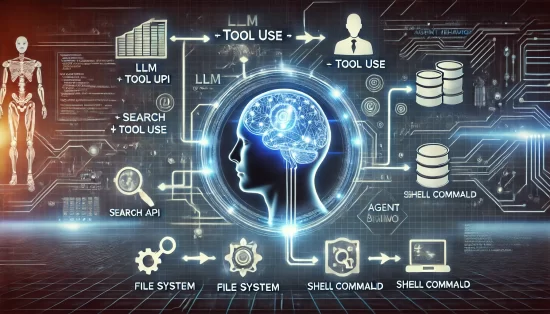Precap
-
LLMs are powerful, but they aren’t agents by themselves.
-
Tools let LLMs interact with data, systems, and the real world.
-
Combining LLMs with tools enables agent behavior: autonomy, planning, action.
-
This is the architecture powering the next wave of AI systems.
I’ve been working closely with Large Language Models (LLMs), autonomous agents, and workflow orchestration tools—and one thing has become clear:
The real magic doesn’t just happen when an LLM responds.
It happens when an LLM acts.
This shift—from passive response to active behavior—is transforming how we think about AI.
And here’s the formula at the heart of it:
LLM + Tool Use = Agent Behavior
Sounds simple, but there’s a lot packed into that equation. In this piece, I want to break it down based on practical experience—how combining LLMs with tool use unlocks true autonomy and intelligent behavior.

LLMs Are Not Agents (Alone)
It’s a common misconception that an LLM—like GPT-4 or Claude—is automatically an agent. It’s not.
LLMs are powerful reasoning engines. They can:
-
Predict text
-
Understand instructions
-
Generate answers, code, content
But left on their own, they don’t:
-
Take actions
-
Interface with APIs or files
-
Loop or reflect
-
Choose tools dynamically
-
Remember across sessions (without external help)
An LLM is like a brilliant consultant sitting in a room. They can answer anything—but they won’t move a finger unless you give them a phone, a laptop, or a task list.
That’s where tool use comes in.
What Do We Mean by “Tool Use”?
In the agent ecosystem, tools refer to external functions or APIs the LLM can call to extend its capabilities.
Think of tools like:
-
Web search
-
File readers/writers
-
Shell commands
-
Python function calls
-
SQL query engines
-
Custom APIs (e.g., weather, CRM, Jira, Kubernetes)
Tool use allows the LLM to break out of the language bubble and interact with the real world.
Without tools, the LLM can only tell you the answer.
With tools, the LLM can go get the answer.
Combining LLM + Tools = Agents
Here’s where it gets exciting.
When you combine an LLM with a toolset, a memory module, and a planning loop, you create a true agent.
Let’s unpack that:
LLM (Reasoning)
At the core, the LLM is the brain—it decides what to do next based on the current state.
Tools (Actuation)
These are the LLM’s hands. They allow it to:
-
Fetch data
-
Perform calculations
-
Interface with systems
Memory (Context Over Time)
Memory allows the agent to:
-
Track past steps
-
Store long-term knowledge
-
Learn from mistakes
Planning (Autonomy)
With simple planning logic or graph-based workflows (like LangGraph), the agent can:
-
Set goals
-
Break tasks into steps
-
Retry or reflect if needed
Put it all together and suddenly, you’re not just generating text—you’re orchestrating behavior.
Real Example: Log Analyzer Agent
Let’s take a use case I’ve personally worked on—building an agent that can read application logs, identify errors, and propose fixes.
On its own, the LLM could analyze the text of a log. But it couldn’t:
-
Load the log files
-
Filter out noisy entries
-
Retrieve relevant code from the repo
-
Suggest a fix and test it
By giving the agent tools, it could:
-
Use a file parser to read logs
-
Use vector search to find related code
-
Call an LLM to generate fixes
-
Run tests via a shell script
-
Use memory to retry if the fix fails
That’s not just language generation. That’s agent behavior.
Why This Matters: Beyond Chatbots
LLMs alone can create amazing chat experiences. But agents are not chatbots. They are systems.
The LLM + Tool Use model unlocks:
-
Research agents
-
Coding agents
-
Legal review agents
-
Personal task managers
-
Financial modeling agents
With proper orchestration, you get self-guided problem-solvers, not just responders.
The Emergence of Autonomy
As you stack LLM + Tools + Memory + Planning, you start seeing emergent traits:
-
Decision-making
-
Reflection (via scratchpad memory)
-
Role-playing and collaboration (multi-agent systems)
-
Goal-seeking behavior
This isn’t artificial general intelligence (AGI), but it feels like autonomy—and in practice, it’s incredibly powerful.
You can build agents that:
-
Ask for clarification
-
Escalate to a human when needed
-
Propose next steps
It’s not just automation. It’s intelligent delegation.
Key Design Patterns
After working with several agentic frameworks (LangChain, AutoGen, LangGraph, CrewAI), some design principles stand out:
1. Tool Wrapping
Define tools with clear input/output formats and give them natural language names. This helps the LLM “choose” which tool to call.
2. Structured Planning
Use graphs (LangGraph) or chat-driven planning (AutoGen) to give structure to decision-making.
3. Memory Separation
Use short-term memory for state tracking, long-term for knowledge base. Don’t overload context windows.
4. Human-in-the-Loop
Always offer override or audit options. Let humans supervise or validate critical actions.
The Road Ahead
LLM + Tool Use isn’t just a clever integration. It’s a paradigm shift.
We’re not just building smarter interfaces. We’re building digital colleagues.
The agent-based model is rapidly becoming the foundation of AI-native apps. As this space matures, expect:
-
More declarative agent orchestration
-
Domain-specific toolkits (e.g., DevOps agents, Legal agents)
-
SaaS products with embedded autonomous workflows
-
Personalized AI agents trained on your tools, data, preferences
And behind every one of them is that core formula:
LLM + Tools = Behavior




